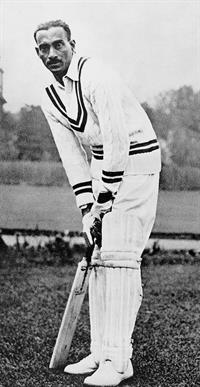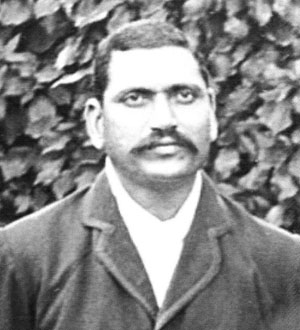PDF chapter test TRY NOW
Modern cricket is dominated by Tests and one-day internationals, played between national teams. The players who become famous, who live on in the memories of cricket’s public, are those who have played for their country. The players Indian fans remember even now are those who were fortunate enough to play Test cricket. C.K. Nayudu, an outstanding Indian batsman of his time, lives on in the popular imagination when some of his great contemporaries like Palwankar Vithal and Palwankar Baloo have been forgotten. Even though Nayudu was past his cricketing prime when he played for India in its first Test matches against England starting in 1932, his place in India’s cricket history is assured because he was the country’s first Test captain.
India entered the world of Test cricket in 1932, a decade and a half before it became an independent nation. This was possible because Test cricket from its origins in 1877 was organised as a contest between different parts of the British empire, not sovereign nations. The first Test was played between England and Australia when Australia was still a white-settler colony. Similarly, the small countries of the Caribbean that together make up the West Indies team were British colonies till well after the Second World War.
Explanation:
In today's world, test matches and one-day Internationals are the ones that fans are eager to follow. Every country has a national cricket team, which represents the Nation. Every International match and test cricket is played between the National teams. Getting into a National team is not easy, as the players have to go through a various selection process, play for their local teams, get selected, perform well in the Ranji trophy etc. These cricketers who perform really well gain popularity amongst the crowd, as they gain a reputation for the entire Nation. Cricket is not only seen as a form of entertainment or a mere sport, it is an emotion and people connect to it personally. They see each victory as their own personal victory. They see the cricketers as their own family. Most of the famous cricketers who stay on the mind of the audience even after retirement are mostly the ones that have made phenomenal results in test matches.

People celebrating cricket
Guha gives the example of one such test player who is still fondly remembered by Indian cricket fans. C. K Naydu, who was an outstanding batsman of his time, still remains in the hearts of the audience. He was prominent in the \(1950s\) and produced several records for the Nation. He played for India in its first Test matches against England starting in \(1932\). His contemporaries such as Palwankar Vithal and Palwankar Baloo, were really famous when they played the game but soon faded out of the audience's memories as they did not have enough records in test matches and were not very consistent. Naydu is still remembered because he was the country’s first Test captain.

CK Naydu*

Palwankar Baloo**
India played its first Test match in \(1932\). This was around \(13\) years before India gained independence from the British in \(1945\) and was established as a separate country. The first test cricket match had its origin in \(1877\), where it was played among the British colonies and not between the Nations. The British had colonised nearly all countries and the first test match was played between England and Australia, which was another British colony. Many colonies like West Indies, which was a group of islands from the Caribbean until the second World war also took part in the game.
Meaning of difficult words:
| S.No | Words | Meaning |
1 | Outstanding | Great performance |
2 | Sovereign | Possessing supreme power |
3 | Contemporaries | A person working/ existing with someone at the same time |
4 | Prime | In the young age |
5 | Decade | A period of ten years |
6 | Reputation | Fame |
Reference:
National Council of Educational Research and Training (2007). Honeycomb. The Cricket Story- Ramachandra Guha (pp. 139-151). Published at the Publication Division by the Secretary, National Council of Educational Research and Training, Sri Aurobindo Marg, New Delhi.
